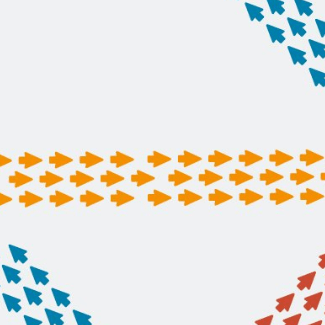Customer Lifetime Value Analysis And Its Role In Your Business

A company should not only be concerned with short-term revenues and profits. One important tool that helps ensure long-term success is retaining the right customer relationships-those that impact a company's financial health. This is done by measuring customer lifetime value (CLV), which is a term used for the projected total net profit a company makes from any given customer. This reveals how much as customer relationship is worth over a period of time. If you know how to wield the power CLV, you will have a deeper understanding of a customer's journey that will help you change their lifetime value- from unprofitable to profitable.
Why do you need to determine CLV? The following are some hypothetical situations of calculating CLV and increasing it.
To better understand your customer base
Company ABC is an investment management firm that has a long history of servicing army veterans, pensioners, and retired school teachers. As its core customer base dwindle in recent years, its marketing team worked with an advertising startup to entice a new breed of customers: cash-rich millennials. Company ABC analyzed its acquisition strategy via customer lifetime value analysis. One simple way of computing CLV is by multiplying the profit generated by a customer per year by the number of years that he/she is a customer of that brand and deducting the cost of acquisition. The CLV analysis enables company ABC to understand the investing behavior of its millennial investors as well as their customer journey.
To save on marketing budget
Before using CLV, online clothing retailer DEF spent roughly 40% of its annual budget on ads, fashion shows, and sponsorships. Its profit stream was gradual primarily because of the high marketing expenses. Knowing the right customers enable companies to develop targeted marketing programs, reducing unnecessary marketing expenses. "In some cases, a firm might decide to discontinue service to certain customers or to reward other customers, thereby increasing the retention rate," according to Harvard Business School.
To influence your customers' behaviors and change their lifetime value
Ken Smith, the sole proprietor of coffee shop XYZ, thought that he knew his customer base very well until he used CLV analysis. Each week, an average of 165 customers visit his coffee shop to spend roughly $10 dollars per transaction. Using CLV, he learned that he was giving gift vouchers (rewards) to the wrong people, the higher spenders, but less to frequent visitors. For an instance, customer 1 spends $15 per week and $60 per month, while customer 2 buys coffee and food worth $25 per visit, but rarely visits twice in any given month. Moreover, the cost of acquiring patrons like customer 2 is much higher than retaining the likes of customer 1. Ken realized that while he wants to gain more big spenders, he is determined to convert more regular-spending customers. Thus, he introduced a rewards program that will encourage people to spend in his coffee shop more often.
To identify problems at the early stages
Company QRS is a life insurer with sales agents operating in the U.S. and parts of Asia. On its eight years of operations in East Asia, its new business posted a sharp decline. Through CLV analysis, it was able to detect cross-selling practices of sales agents in Japan and South Korea. It analyzed recent buying patterns in regions it used to consider as profitable territories. Company QRS did not have to wait for another year of poor performance to confirm that a problem is brewing in one of its business segments.
To invest in essential customer service channels
Spouses Ana Maria and Carlos Diaz export furniture pieces from Colombia to North Carolina. They service households, interior designers, restaurants, and hotels. Their 23-year-old daughter Carina proposed setting up an online customer support based on a CLV analysis. The spouses were initially adamant as they felt comfortable with taking inquiries and orders via two landlines in their corporate office in Bogota. According to Carina's CLV report, their clients with the highest CLV were interior designers in Raleigh and Asheville who are tech-savvy, mobile, and demand urgent attention to their needs.
Digital marketing and CLV
From the above-mentioned examples, CLV is most relevant in devising cost-effective marketing programs. Efforts are streamlined and customized to the right customers-those who impact the long-term health of a company. The uses of CLV on traditional marketing programs are similar on digital marketing. A company is able to map out a strategy specific to a target audience-what type of message, in what format, and on what platform. As an example, life insurer QRS which is facing sales hurdles in East Asia may work with a digital marketing agency in the Philippines to target new customers in the country and the Southeast Asian region.
CLV and technology
CLV is only one of the many ways you can understand and utilize the market to your advantage. The advent of social media and mobile apps opened the doors to a wide array of tools that can help you with your customer acquisition and retention efforts. Some companies are capitalizing on customers' online habits. "Companies are beginning to craft offers based on where a customer is at any given moment, what his social media posts say about his interest, and even what his friends are buying or discussing online," Harvard Business School reported. Some online social platforms even create offers based on the frequency a consumer "checked in" to a certain retail store.
As an entrepreneur in the digital age, it's imperative that you're well-equipped with the right tools to help you compete for the attention of distracted customers. The first question that you should answer is not "how" but "who." Who are your customers? Know the right customers using CLV analysis. This tool will help you better understand the people-their needs, queries and future demands-who bring in long-term profitability. CLV also cuts down unnecessary expenses on marketing and customer support; you only spend on target programs. This measurement helps you identify and solve problems early on, and most importantly, enables you to convert an unprofitable customer to one who contributes to your long-term success.
Jona Jone was a mortgage originator in Philadelphia, PA and is now a business and property Specialist. She writes about real estate investment, business and digital marketing in general.








